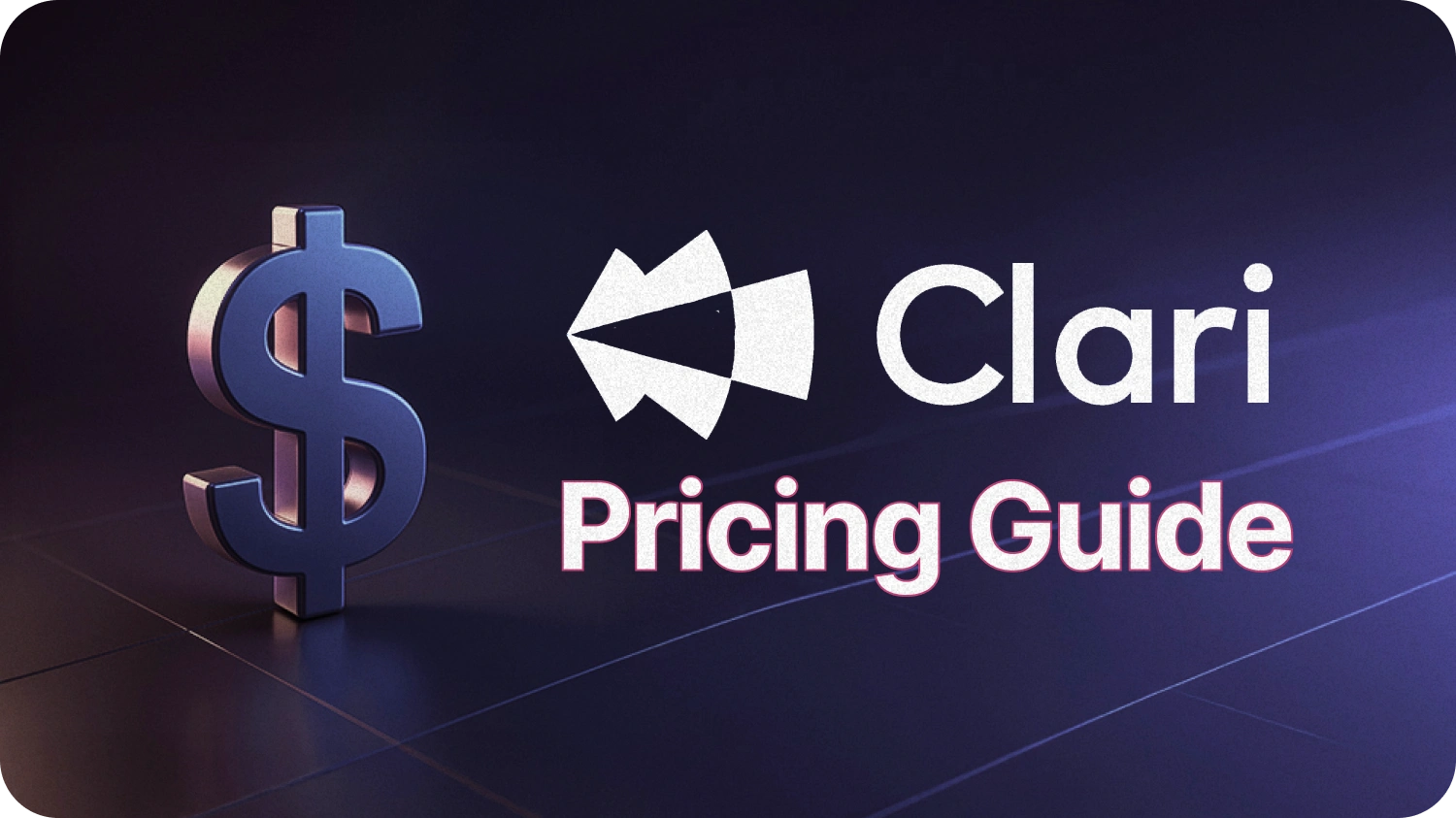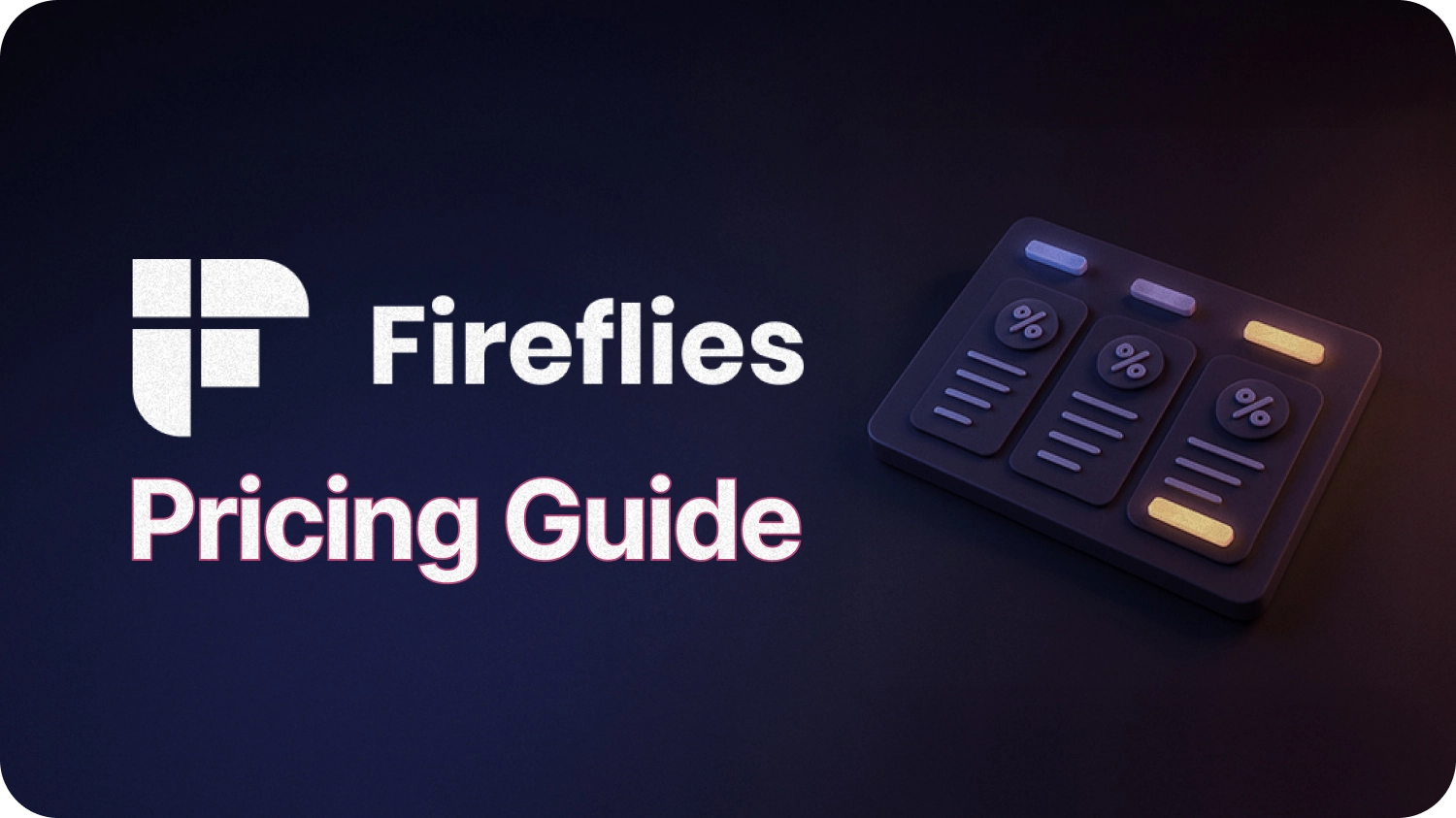Salesloft today brands itself as a “Revenue Orchestration Platform” that bundles sales engagement, conversational intelligence, and revenue insights together in one suite.
It also offers email sequencing and dialers, plus new capabilities like coaching analytics, deal pipeline tracking, and even forecasting tools.
At a glance, it’s a powerful all-in-one platform for sales teams. So why are many companies seeking Salesloft alternatives in 2025?
Perhaps they realize they’re paying for features they don’t need, or struggling to get reps to adopt the full platform?
This blog will answer those questions and also break down 9 credible Salesloft alternatives that can be a better fit for your sales team in 2025.
About Salesloft
Let's go back a little and see how Salesloft evolved to be the tool that it is today. Salesloft started in 2011 as a sales intelligence tool enabling companies to track their prospects.
Salesloft originally started as a sales prospecting automation tool to track job changes, blog posts, and LinkedIn activity. It alerted reps when a lead made news, changed roles, or posted online. The company later pivoted toward sales engagement as its core focus.
It’s when Salesloft introduced "Cadence," the product that now offers email tracking and the use of email templates.
Since then, Salesloft has been adding more products to its offering. It now offers the entire suite of products useful for prospecting, deal closure, and support.
Salesloft’s Offerings in 2025
Once known simply as a sales engagement tool, Salesloft in 2025 has reinvented itself as a full-fledged “Revenue Orchestration Platform.”
Its offerings now span every stage of the sales cycle, organized into packages like Prospect, Sell, Engage, and an Enterprise tier that includes the full suite.
In recent years, Salesloft has layered on capabilities such as AI-driven forecasting, AI-guided coaching, conversation intelligence for call insights, and deal insights.
All told, Salesloft’s scope today goes well beyond cadences. It’s about orchestrating every facet of the revenue cycle in one unified platform.
Salesloft Product Comparison
As the table below shows, all product tiers share six core features:
- Sales Email
- Calendaring
- Mobile App Access
- CRM Sync
- Integrations
- Security & Governance
The main differences lie in capabilities such as Conversations, Deals, Automation, Dialer, and Messenger.
Salesloft Pricing in 2025
Salesloft does not publicly disclose its pricing on the website. Instead, it offers custom quotes based on the number of licenses, selected product bundles, and specific business needs.
Some packages may also come with minimum seat requirements, especially at the enterprise level.
1. Onboarding Fees
Salesloft typically charges a one-time onboarding fee ranging from $3,000 to $3,500.
2. Subscription Fees
Pricing varies by package and team size. Estimated ranges (per user/month) include:
Note that we came up with this pricing information based on publicly available estimates and third-party sources.
Salesloft’s actual pricing may differ based on contract terms and implementation requirements.
Why Look for Salesloft Alternatives in 2025?
Salesloft remains a leader in sales engagement, but it isn’t perfect for everyone. Here are the major reasons teams in 2025 are considering other options:
1. High Pricing and Lack of Flexibility
Salesloft’s pricing is a sticking point for many. For one, it’s not listed publicly and often requires a custom quote with enterprise-level fees (plus mandatory onboarding costs).
Many businesses find themselves paying for bundles of features they don’t fully use, with limited ability to choose a lighter or cheaper plan.
The lack of a free trial and unclear pricing tiers make it hard to justify the cost without a big commitment.
In short, Salesloft can be overkill for companies that don’t need the full orchestra of features.
2. “All-in-One” Platform Can Feel Rigid
By trying to be an all-in-one platform for prospecting, closing, and post-sale engagement, Salesloft has become a bloated, complex tool.
It offers little room for customization; you have to adopt Salesloft’s way of doing things.
Many users report that the interface feels clunky or hard to tailor to their processes. Its integrations beyond the CRM and email tools can be patchy, which means you’ll need to adjust to Salesloft’s ecosystem rather than the other way around.
3. Complexity and Steep Learning Curve
With so many features packed in, Salesloft can be daunting for new users. Sales reps often don’t utilize half the features available.
Training and onboarding take longer, and some admins find it tiring to manage all the moving parts (e.g., cadences, call recordings, and analytics).
If your team only needs a few core capabilities, the extra trappings can actually hurt adoption.
In 2025, most teams want tools that are more straightforward and user-friendly, even if they offer fewer total features.
Aside from these reasons, some users also cite customer support issues such as slow response times.
How We Evaluated These Alternatives
Finding the right Salesloft alternative meant looking at tools through a fresh lens. We considered a framework based on the factors that matter most in 2025:
We used this framework to pick 9 alternatives that plug the holes Salesloft leaves in its offerings.
Next, let’s compare the top Salesloft competitors and see which could be the best fit for your sales organization.
The 9 Best Salesloft Alternatives in 2025
Below, we break down the leading alternatives to Salesloft, including both sales engagement platforms (for email sequences, outreach, etc.) and revenue intelligence tools (for call recording, coaching, and revenue insights).
1. MeetRecord
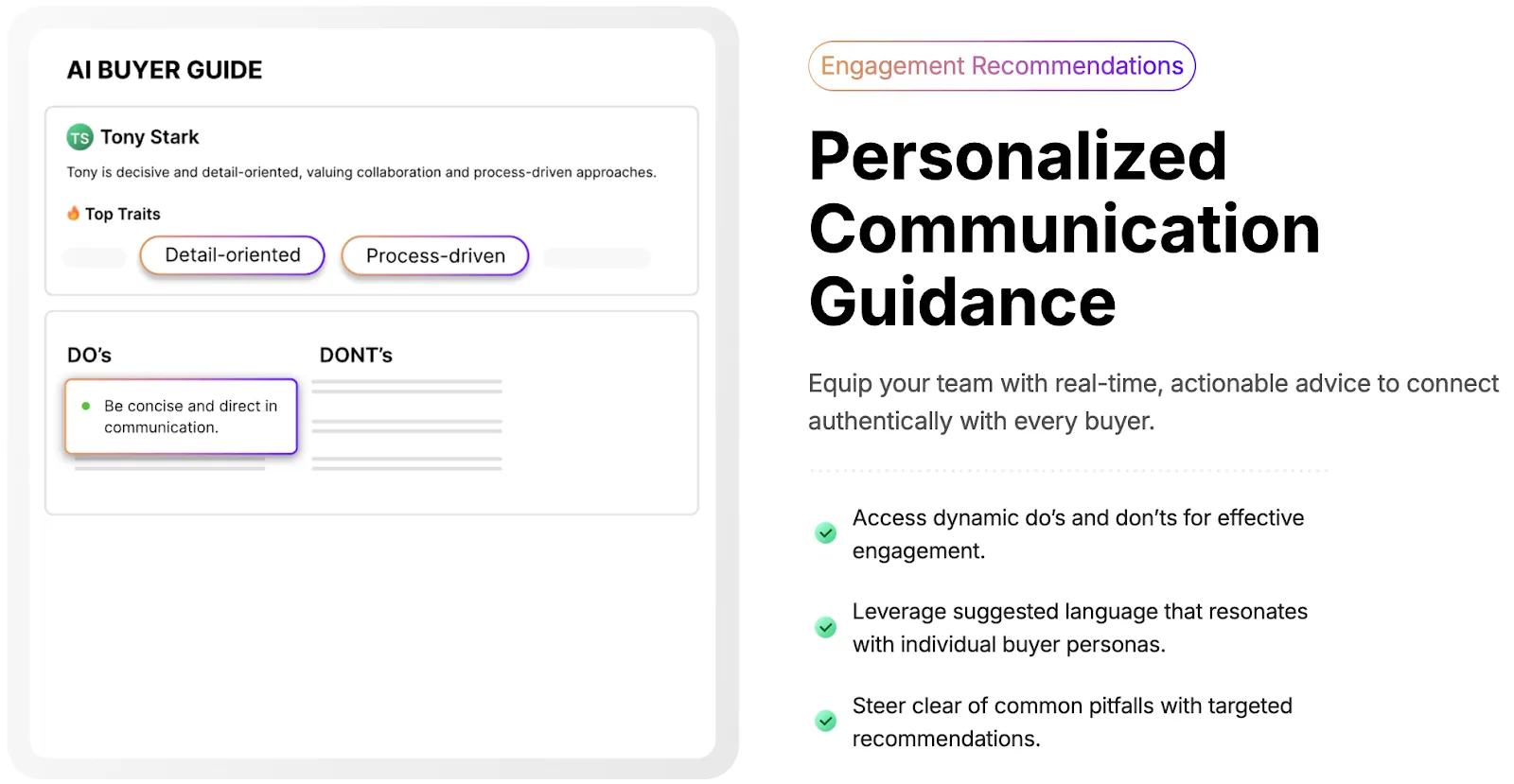
MeetRecord is a revenue AI platform purpose-built for high-performance sales and revenue teams.
With MeetRecord, you get real-time call recording and transcription, AI analytics that surface buyer signals and deal risks, and robust sales coaching tools all in one place.
Unlike many tools that stitch on CRM automation and sales coaching as afterthoughts, MeetRecord ties every call and activity directly to your pipeline and forecasts.
The interface is clean and built with busy salespeople in mind, so adoption tends to be quick. It’s also an AI-first tool from the ground up, offering features like AI-generated call summaries, sentiment analysis, and even an AI Sales Roleplay module for practicing calls.
MeetRecord also has a 9.3 (out of 10) rating for its quality support on G2, 4.9 (out of 5) in Capterra, and 5 (out of 5) in Software Advice.
How MeetRecord Compares to Salesloft
Pricing:
Custom pricing, tailored to fit specific business needs. Book a demo to learn more.
Testimonial:
2. Outreach.io
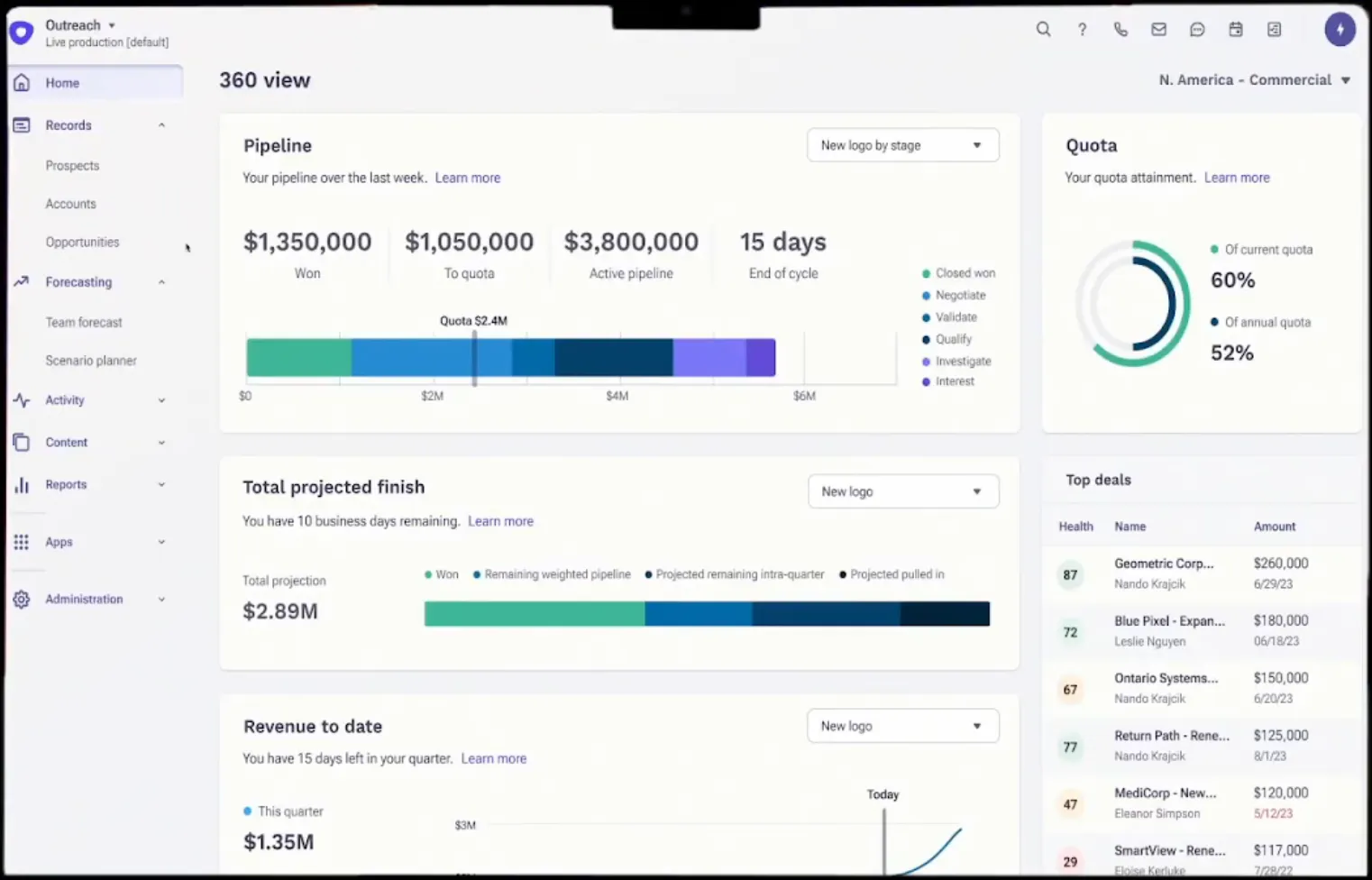
Outreach is often the first name that comes up as a Salesloft alternative, and for good reason. Outreach is a leading sales engagement platform that helps sales teams automate and optimize their multi-channel outreach.
From email sequences and task cadences to a built-in dialer and LinkedIn integration, Outreach covers the core of prospecting and pipeline generation much like Salesloft does.
Where Outreach has differentiated itself is by evolving into a broader “sales execution” platform with AI-driven insights.
For example, Outreach’s Kai is an AI layer that analyzes deal activity and highlights risks and next-best actions for reps and managers.
In short, Outreach is a powerhouse that can replace Salesloft almost feature-for-feature for engagement, while adding its own advanced AI coaching touches.
How Outreach Compares to Salesloft?
Pricing:
Not listed publicly. You can expect a ballpark similar to Salesloft: plans in the $100–$150 per user per month range, often with minimum user commitments.
Testimonial:
3. Gong.io
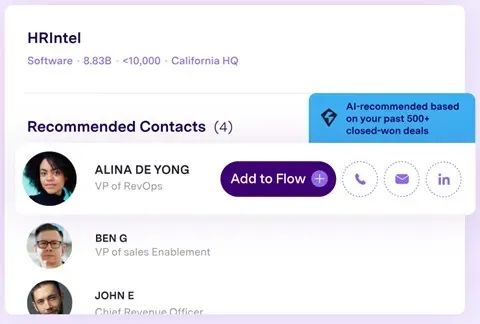
Gong is a leading player in the revenue and conversation intelligence space. If you’re mainly interested in the call recording/coaching side of Salesloft’s platform, you should have Gong in your radar.
Beyond conversation intelligence, one of Gong’s biggest selling points is its advanced analytics capabilities. It doesn’t just capture what was said; it identifies patterns (e.g., talk ratios, mention of competitors, sentiment analysis) and correlates them with outcomes.
Compared to Salesloft, Gong is laser-focused on conversation and revenue insights, not on outbound sequencing.
It won’t send emails or make calls for you. Instead, it plugs into your Zoom/Teams, email, CRM, and calendar to observe and analyze.
How Gong Compares to Salesloft?
Pricing:
Not listed publicly. Our research shows that it's priced at high-five figures.
Curious what Gong actually costs? Here’s a full breakdown of Gong Pricing and how it stacks up with its competitors.
Testimonial:
4. Chorus by ZoomInfo
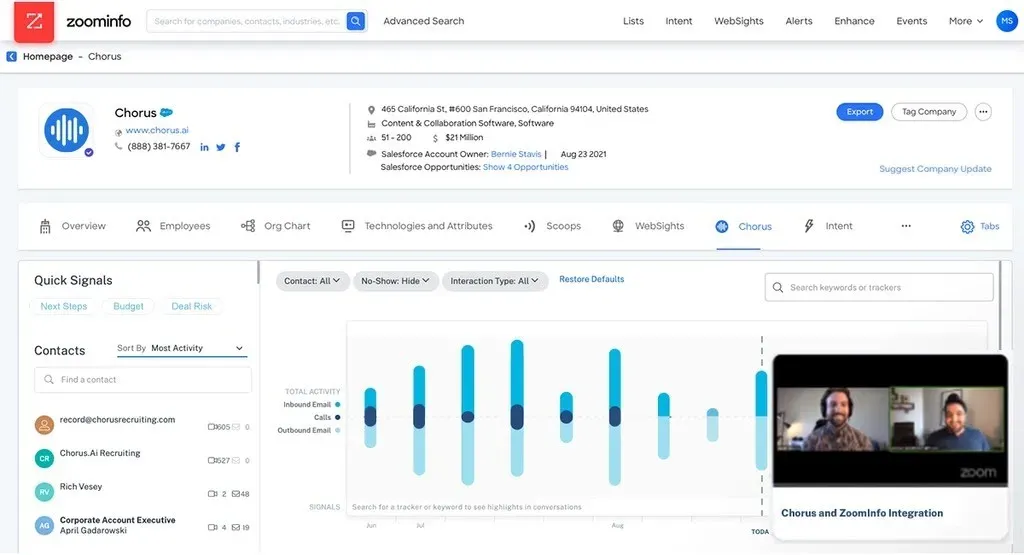
Chorus is yet another top-tier conversation intelligence platform and was one of Gong’s earliest competitors.
In 2021, ZoomInfo acquired Chorus and made it part of ZoomInfo’s larger data and sales software ecosystem. Now often referred to as “ZoomInfo Chorus AI,” it continues to offer call recording, transcription, and analytics similar to Gong.
If your interest in Salesloft lies in the Conversations module, Chorus is a good bet to consider alongside MeetRecord or Gong.
Since Chorus integrates tightly with ZoomInfo’s sales intelligence data, it links calls to ZoomInfo’s contact/account data or feeds conversation insights into ZoomInfo’s platform.
This means you can tie into an outreach workflow if you already use ZoomInfo’s suite.
How Does Chorus Compare to Salesloft?
Pricing:
Not listed publicly. Our findings show that it’s priced between $100–$200 per user/month.
If you’ve used Chorus and find it too clunky or costly, check out these top Chorus alternatives that teams are switching to.
Testimonial:
5. Clari Copilot (Formerly Wingman by Clari)
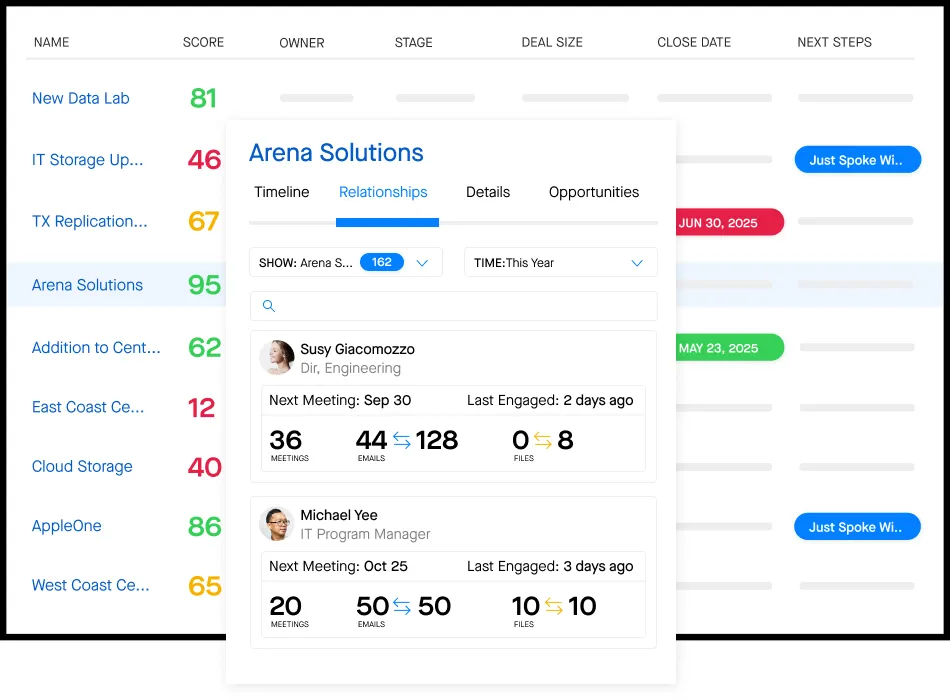
Clari Copilot is the new name for Wingman, a conversation intelligence tool that Clari acquired in 2022.
By adding Wingman (now Copilot) to its lineup, Clari offers an integrated solution: forecasting + pipeline management + conversation intelligence under the same roof.
What sets Clari Copilot apart is its focus on real-time assistance during calls. For instance, if a prospect mentions a competitor or pricing during a call, Clari shows “cue cards” for the reps to reference at the moment.
Clari Copilot is also connected natively to the Clari platform, which makes it easy for it to sync deal insights from calls into your forecasting and pipeline views.
Clari Copilot’s analytics feature is noteworthy, too. It covers all the essentials and in real-time, although it arguably isn’t as deep as Gong’s AI analysis.
How Does Copilot Compare to Salesloft?
Pricing:
Bundled with Clari, Copilot pricing is not disclosed publicly. Expect a per-user subscription between ~$60–100/user/month range.
If you are evaluating revenue intelligence tools beyond Salesloft, check out our detailed blog on Clari alternatives.
Testimonial:
6. HubSpot Sales Hub

HubSpot, of course, is known for its CRM and marketing platform. Sales Hub is a suite of sales features that includes features like email sequencing, call tracking, meeting scheduling, task automation, and even a basic conversation intelligence add-on.
If you’re already using HubSpot’s CRM, upgrading to Sales Hub is an easier option than evaluating an alternative like Salesloft.
The interface is extremely user-friendly, which is typical of any HubSpot product. HubSpot organizes all your activity logs and engagement data natively in the CRM. This means you’ll have a unified database of your customer interactions.
That said, HubSpot Sales Hub isn’t as feature-rich in sales engagement as Salesloft or Outreach.
How Does HubSpot Compare to Salesloft?
Pricing:
Free plan with limited features. Paid plans start at $90/user/month.
Testimonial:
7. Apollo.io
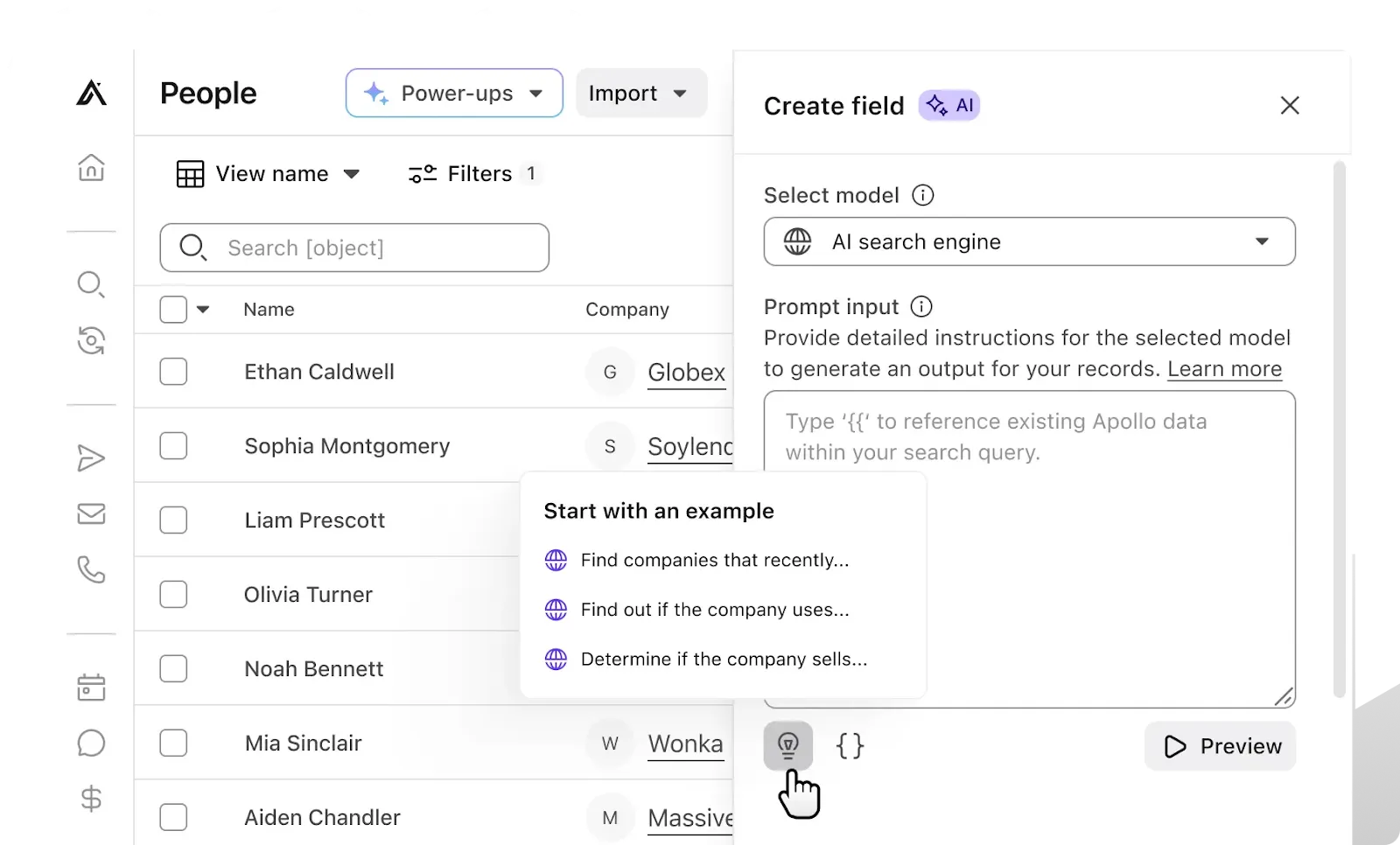
Apollo is a two-in-one platform that combines outbound sequencing ( like Salesloft) and a B2B buyer database (like ZoomInfo).
It’s an attractive combo for small and mid-size companies that want to scale outbound sales without investing in multiple expensive tools.
Apollo lets you find prospects (with emails, phone numbers, etc.) and then reach out to them through automated email sequences and dialing.
In terms of engagement features, Apollo offers email sequencing with automation rules, an integrated dialer, call recording, LinkedIn integration, and even an AI sales assistant for crafting emails.
How Does Apollo Compare to Salesloft?
Pricing:
Free plan with limits on emails and contact credits. Paid plans start at $49/user/month.
Testimonial:
8. Mixmax

If Salesloft feels too heavy or you prefer working out of email, Mixmax is a refreshing alternative.
It offers email sequencing, templates, email tracking, meeting scheduling, and even some light CRM automation workflows.
Mixmax has a sidebar where you can log activities to CRM and see contextual info about contacts. It essentially brings many Salesloft-like capabilities to where reps already spend a lot of time: their inbox.
It also has handy tools like one-click meeting scheduling, polls and surveys in emails, and a Slack integration to alert you of important email events.
However, Mixmax is mostly focused on email. It doesn’t have a built-in dialer, for example.
How Does Mixmax Compare to Salesloft?
Pricing:
Free plan available. Paid plans start at $29/user/month.
Testimonial:
9. Groove.co
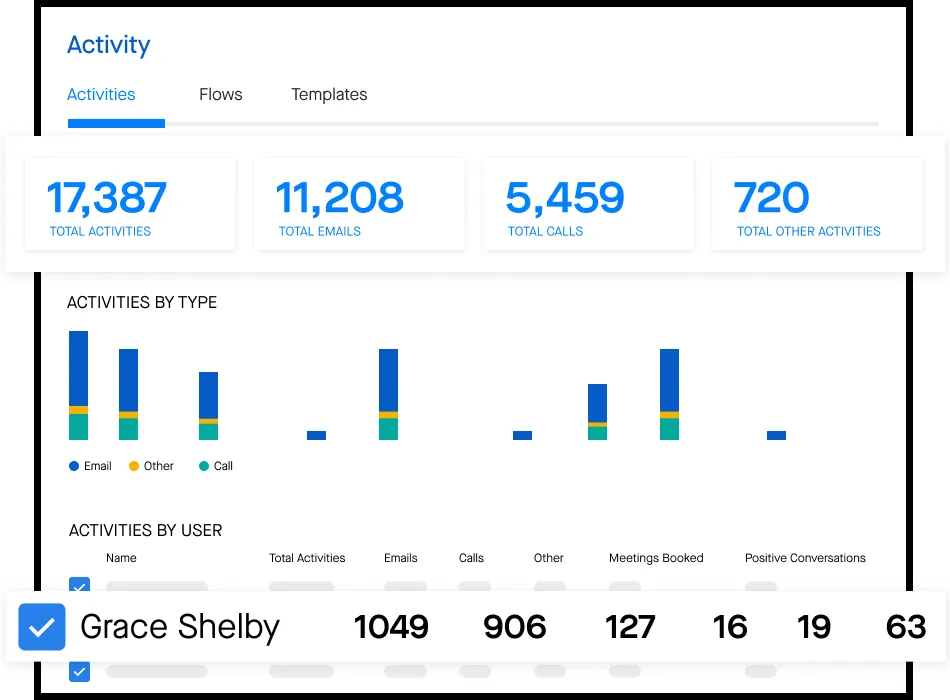
If your sales org lives in Salesforce, Groove is a good alternative to Salesloft. It helps automate multi-channel outreach (email, calls, LinkedIn), offers templates and dialers, and automatically logs activities into Salesforce.
Functionally, Groove offers similar capabilities to Salesloft: you create multi-step cadences, send emails from Gmail/Outlook or Salesforce, auto-dial prospects, and get engagement analytics.
Groove also has a “Groove Inbox” and “Groove Workspaces” for teams to share templates, see collective activity on accounts, and manage things like a shared team email inbox.
It’s useful for account-based sales motions where multiple people work the same account. Salesloft can do some of this, but Groove does it natively in the CRM context.
Interesting fun fact: Groove is actually part of Clari’s product suite.
How Does Groove Compare to Salesloft?
Pricing:
Not listed publicly.
Testimonial:
Comparison Table: Salesloft vs Top Alternatives at a Glance
Here’s a quick side-by-side look at these 9 Salesloft alternatives based on what we reviewed earlier:
The Right Salesloft Alternative Depends on What You’re Solving For
Salesloft isn’t your only option, especially if you’re rethinking budget, complexity, or coaching depth. Tools like Apollo or Mixmax suit leaner teams, while Groove fits tight Salesforce workflows.
But if your focus is revenue intelligence, coaching, and real ROI, try MeetRecord. It’s built for modern revenue teams who want insights that drive action, not just dashboards.
Book a demo with MeetRecord and see the difference yourself.


.svg)

.webp)

